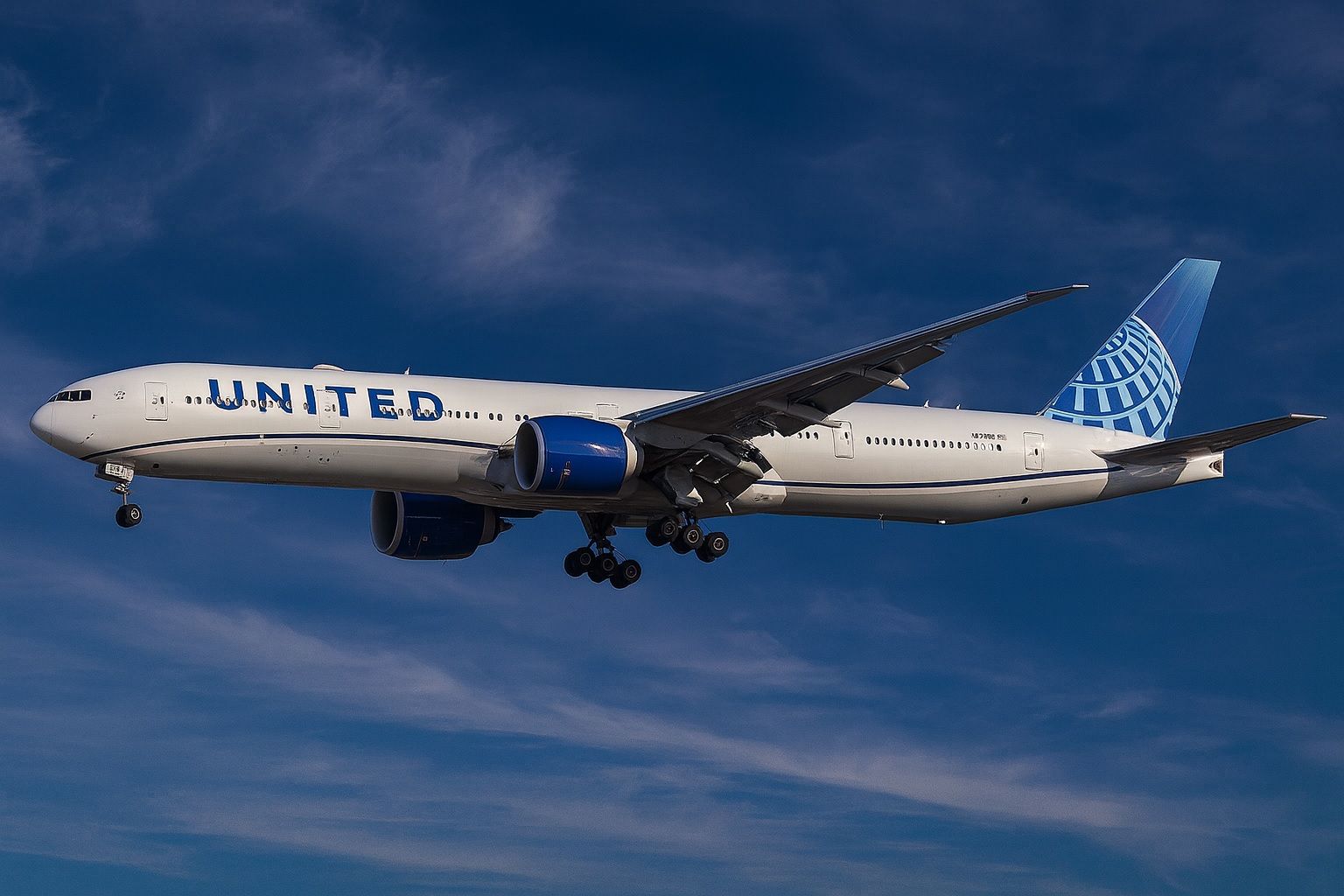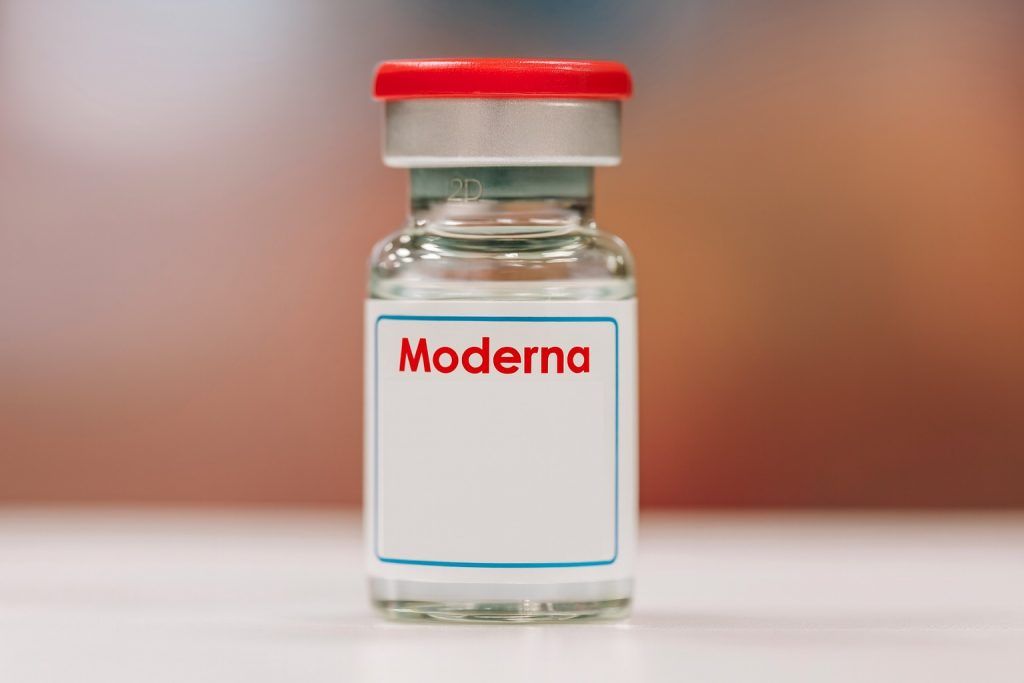- Stock Rally: United Airlines Holdings (NASDAQ: UAL) shares have jumped this week, rising from about $99 on Oct. 13 to roughly $104 by Oct. 15 [1]. The stock is up approximately 13% over the past three months and about 45% higher than a year ago [2], reflecting strong investor confidence.
- Q3 Earnings Beat: United posted third-quarter 2025 adjusted earnings of $2.78 per share, topping Wall Street’s ~$2.63 consensus [3]. Revenue for Q3 was $15.2 billion (a 2.6% year-over-year increase), just shy of the ~$15.3 billion analyst estimate [4]. Robust premium-cabin sales (+6% YoY) and loyalty program revenue (+9% YoY) helped drive the beat.
- Upbeat Outlook: The airline raised its Q4 guidance, forecasting adjusted earnings of $3.00–$3.50 per share – well above the ~$2.86 analyst consensus [5]. United expects record-high quarterly revenue in Q4 as travel demand continues to climb. Following the optimistic outlook, UAL’s stock rose about 1–1.5% in after-hours trading on the news [6].
- Analyst Sentiment: Wall Street remains bullish on United. The consensus rating is “Buy”, with an average 12-month price target around $120 (roughly 15–18% above the recent share price) [7]. Many analysts applaud United’s focus on high-paying corporate and premium leisure travelers, which is bolstering margins and growth.
- Peer Comparison: United and Delta Air Lines have been leading the industry in profitability. Delta’s recent earnings beat (Q3 adjusted EPS $1.71 vs. $1.52 expected) lifted airline stocks broadly [8]. Both carriers are capturing outsized profits by catering to premium and international travel demand [9]. In contrast, more domestic-focused rivals (like American Airlines) are grappling with softer U.S. demand and higher costs [10], which has made their outlooks less upbeat.
- Industry Trends:Air travel demand remains resilient despite economic headwinds. Airlines have kept fares high by limiting capacity growth – for example, Spirit Airlines’ retrenchment and other carriers’ disciplined seat capacity plans have bolstered ticket prices [11]. Meanwhile, jet fuel prices have moderated: U.S. jet fuel averaged about $2.32/gallon in mid-October, slightly below United’s Q3 average cost of $2.43 [12], providing some relief on the expense side.
- Recent News: United is expanding its network and partnerships. In October, it announced new summer 2026 routes to Europe (including Split, Croatia; Glasgow, Scotland; and Bari, Italy) [13], underscoring its growth as the largest transatlantic carrier. United also unveiled a MileagePlus partnership with Instacart, allowing flyers to earn miles on grocery deliveries [14]. On the labor front, the airline’s flight attendants resumed contract talks in early October amid industry-wide negotiations on wage increases [15] – so far without any disruption to operations.
Stock Performance and Recent Trends
United’s stock has been climbing steadily heading into the earnings report. It closed around $104.18 on Oct. 15, up about 5% in just two days [16]. This week’s rally built on a broader uptrend – shares have gained roughly 13% over the past quarter and nearly 45% year-on-year [17]. Investors drove the stock higher in anticipation of strong results, aided by optimism across the airline sector. Notably, Delta’s upbeat earnings on Oct. 9 sent airline stocks higher, signaling that strength at one major carrier can lift the group [18]. Market bulls argue that United’s emphasis on premium and international routes positions it to capture outsized demand, while bears caution that airline stocks can be volatile and carry high debt loads [19]. So far, optimism about robust travel demand heading into the holiday season has outweighed those concerns, making UAL one of the market’s stronger performers into mid-October.
Q3 2025 Earnings: Strong Results Fuel Optimism
United’s third-quarter 2025 earnings delivered good news for investors. Adjusted earnings came in at $2.78 per share, beating analyst expectations (around $2.63) by a comfortable margin [20]. This result marks a solid profit uptick, supported by revenue of $15.2 billion, which rose 2.6% from the same quarter last year [21]. While revenue was slightly below forecasts (Wall Street had anticipated roughly $15.3 billion) [22], the shortfall was minor and partly attributed to one-time factors. In fact, United noted that operational disruptions at Newark Airport dampened its unit revenue (revenue per seat mile) in Q3 – an issue it expects to resolve going forward [23].
The quality of United’s revenue in Q3 was encouraging. Higher-paying segments drove the growth: premium cabin ticket sales jumped about 6% year-over-year, and the airline’s MileagePlus loyalty program revenue grew 9% [24]. Even basic economy fares and cargo revenues ticked up, indicating broad-based demand across customer segments [25]. United’s pre-tax income hit $1.3 billion, an 8.2% profit margin [26], showing improved efficiency.
United’s CEO Scott Kirby highlighted that the company’s heavy investments in customer experience – from upgraded cabins with seat-back screens to onboard Wi-Fi via SpaceX’s Starlink – are paying off by fostering “brand-loyal customers” who choose United for the overall travel experience [27] [28]. “Customers are increasingly choosing an airline that can deliver value for them across the full travel experience,” Kirby explained [29], suggesting that these loyalty-driven flyers help make United more resilient even if economic conditions become choppy.
Q4 Outlook: Record Revenue on the Horizon
Perhaps the biggest highlight of United’s report was its bullish outlook for the fourth quarter of 2025. The airline told investors to expect adjusted Q4 earnings per share between $3.00 and $3.50, blowing past the roughly $2.86 average estimate that analysts had prior to the announcement [30]. The midpoint of United’s forecast ($3.25) implies more than 13% upside to consensus expectations – a classic “beat-and-raise” that caught the market’s attention [31] [32]. United’s management said travel demand heading into year-end is so strong that the company is on track to achieve the highest quarterly revenue in its history in Q4 [33].
Crucially, United’s upbeat guidance also reflects an industry trend of pricing power. With air travel booming and airlines being careful not to over-supply seats, United expects to command higher fares in the coming months. The company pointed out that industry-wide capacity cuts – from the bankruptcy and downsizing of Spirit Airlines to growth moderation by other carriers – should keep ticket prices elevated and support revenues [34] [35]. United’s team also anticipates a “meaningful improvement” in unit revenues now that the Newark airport constraints are easing [36], removing a headwind that affected Q3. In short, the airline sees a recipe for record-breaking sales and profit as it closes out 2025.
Investor reaction to United’s guidance was positive. When the company announced its outlook (after markets closed on Oct. 15), UAL shares ticked up about 1%–1.5% in after-hours trading [37] [38]. That modest pop suggests traders had anticipated good news, yet it reinforced confidence that United can deliver a strong finish to the year. The raised forecast, coupled with the Q3 earnings beat, signals building momentum for United as it enters the busy holiday travel quarter.
Analyst Commentary and Price Targets
Financial analysts have largely praised United’s performance and strategy, and the latest results only strengthened their optimism. The Wall Street consensus on UAL is firmly bullish: 17 analysts compiled by MarketBeat rate the stock a “Buy” on average, and their mean 12-month price target is about $120.64 per share [39]. This implies roughly 17% upside from the current price around $103 [40]. Similarly, TipRanks data shows a cluster of price targets in the low $120s and a Strong Buy/Buy consensus rating [41]. Many experts cite United’s success in attracting premium-cabin and corporate travelers – and the higher profit margins that come with them – as a key reason they expect the stock to outperform [42].
Several major banks and research firms have updated their forecasts following United’s earnings. UBS, for example, reiterated its Buy rating and a $131 price target for UAL even after what it called a somewhat “mixed” Q3 result (since revenue growth slightly lagged forecasts) [43] [44]. The firm acknowledged the revenue shortfall but attributed it partly to Newark airport issues, and it highlighted United’s better-than-expected cost control and strong Q4 guidance as reasons to remain bullish [45]. UBS analysts pointed out that United’s outlook suggests “strong revenue acceleration” into late 2025 and noted robust travel demand from United’s customer base heading into 2026 [46]. They view the Q4 forecast as evidence of United’s momentum despite challenging year-over-year comparisons.
Other analysts echoed this confidence. TD Cowen reaffirmed its positive stance, keeping a Buy/Outperform rating and a $127 price target [47]. Likewise, Bernstein (SocGen) maintained an Outperform rating, calling United’s results “solid” and setting a target around $121 [48]. In fact, multiple analysts have raised their earnings estimates for United in recent days [49]. The overall sentiment is that United’s strategic focus on lucrative market segments is yielding tangible financial gains, and that trend should continue if travel demand stays healthy.
It’s worth noting that United’s stock has already had a big run-up, which some observers are watching closely. The shares have surged roughly 55% over the past six months alone [50], reflecting a dramatic post-pandemic recovery in air travel. This impressive rally outpaced the broader market and even many peers. Valuation is a point of debate – for instance, Investing.com’s analysis suggests UAL may be trading slightly above its calculated fair value after the latest jump [51]. However, most analysts argue there is still room for upside given United’s earnings trajectory. As long as the company continues to beat forecasts and expand profits, they believe the stock can justify those gains. In short, analysts’ forecasts remain upbeat, with price targets well into the triple digits for the coming year [52] [53].
Competitive Landscape: United vs. Other Airlines
United’s recent performance comes amid a widening split in the airline industry. Along with Delta Air Lines, United has been outperforming many rivals by concentrating on higher-fare customers and international growth. Both United and Delta have reported strong earnings and elevated profit margins, whereas several other airlines are struggling with a more challenging environment [54]. Last week, Delta announced it too expects record-breaking Q4 earnings, thanks to vigorous travel demand, premium fare growth, and manageable costs [55]. The two carriers’ ability to tap into corporate travel and affluent leisure travelers has put them at the forefront of the industry’s recovery [56]. They are now generating a disproportionate share of U.S. airline profits [57].
By contrast, carriers that rely heavily on domestic and budget travelers have hit headwinds. For example, American Airlines – which earns roughly two-thirds of its revenue in the domestic market – has faced softer demand at home and rising expenses from rich new labor contracts. American recently offered a cautious 2025 forecast, citing economic uncertainty and only tepid improvement in domestic bookings, a stance that “contrasts with the upbeat forecasts” of Delta and United [58]. American’s more limited pricing power (due to fierce domestic competition) and higher unit costs have made its profit outlook murkier, and its stock has lagged accordingly. Similarly, budget-focused airlines like Southwest and JetBlue have reported weaker trends in leisure travel demand [59]. These airlines, serving more price-sensitive flyers, have had to discount fares to fill seats this year, squeezing their margins.
Industry consolidation and retrenchment are also reshaping the competitive field. Spirit Airlines’ bankruptcy and downsizing is one example – it has removed capacity from the market, which ironically helps the remaining players like United by reducing oversupply [60]. Most major carriers have also reined in their expansion plans to avoid a fare war. This newfound capacity discipline is a significant change from pre-pandemic years, and it’s benefiting airlines that can command higher fares. United and Delta’s strategy of upmarket investments (better cabins, more routes for business and long-haul travel) has aligned well with these conditions, allowing them to pull ahead of the pack. In essence, premium positioning is paying off: United and Delta are thriving with fuller planes and passengers willing to pay extra for comfort and reliability, while competitors focused on ultra-low fares are seeing thinner profits or even losses.
The competitive shake-out is evident in stock performance: United’s and Delta’s shares have far outgained those of rivals like American or Southwest over the past year. The market is rewarding airlines that show they can capitalize on pent-up travel demand without racing to the bottom on ticket prices. As airlines head into the winter and 2026, United’s challenge will be to maintain its edge – especially as competitors adapt and try to win back cost-conscious travelers. For now, however, United stands as one of the industry’s leaders, leveraging its global network and premium offerings to distance itself from the pack.
Industry & Macroeconomic Factors
The broader industry backdrop has been generally favorable for airlines in 2025, and it underpins United’s optimism. Travel demand remains surprisingly strong despite a mixed economic picture. Consumers – buoyed by a solid job market – continue to prioritize spending on travel and experiences, even as other discretionary spending shows signs of cooling [61]. This has kept planes full and allowed airlines to raise fares without suppressing demand too much. Holiday bookings for the upcoming Thanksgiving and winter travel season are reportedly robust, especially for premium cabins and long-haul international trips, which play to United’s strengths [62].
At the same time, the capacity discipline mentioned earlier is providing a tailwind. U.S. airlines have been careful not to flood the market with too many flights, which means supply is growing slower than demand. This dynamic, coupled with the collapse or downsizing of some competitors (like Spirit), has propped up airfare levels [63]. Travelers may grumble about higher ticket prices, but for airlines it has improved unit revenues across the board. United’s management and industry analysts alike expect airfares to “hold up” going forward, as long as carriers avoid over-expansion [64]. In short, there’s less price discounting than in past years, which bodes well for airline revenues.
Fuel prices – historically one of the biggest cost wildcards for airlines – have recently been less volatile. Jet fuel had spiked in 2022–2023, but in 2024 and into 2025 prices have moderated. As of mid-October, U.S. jet fuel was around $2.30–$2.40 per gallon [65], roughly in line with (or a bit below) United’s average fuel cost in Q3 [66]. This stability in fuel expense is a relief for airlines after periods of sharp increases. It means United isn’t seeing a major squeeze on margins from fuel at the moment, and if anything, the slightly lower fuel prices in Q4 could provide a small earnings boost versus earlier in the year. Of course, oil prices can be influenced by geopolitical events – a risk that airlines continuously monitor – but currently the energy outlook is relatively benign for the industry.
Economic and policy factors are a mixed bag but have not derailed travel. The U.S. economy is growing moderately, and fears of an imminent recession have receded somewhat. Inflation, while still present, has cooled compared to 2022, giving consumers more confidence to spend on trips. Importantly, the Federal Reserve appears to be nearing the end of its interest rate hikes, with financial markets even anticipating rate cuts in 2026 [67]. A pause or pivot by the Fed tends to support consumer sentiment and can weaken the dollar, potentially attracting more international tourists to the U.S. All of this creates a reasonably supportive macro environment for airlines – certainly better than an economy in contraction. One near-term hiccup had been the threat of a U.S. government shutdown in October, but even that has had minimal impact on air travel (air traffic control staffing remained adequate and no major disruptions occurred).
Looking ahead, industry watchers do flag some risks on the horizon. If the economy were to slow significantly or enter a recession in 2026, airlines could see demand taper off, especially among price-sensitive leisure travelers. Likewise, any sharp rise in fuel prices – for instance, due to geopolitical conflict in oil-producing regions – would pressure airline profits and potentially force fare hikes that could dampen demand. Additionally, ongoing labor negotiations (like United’s talks with its flight attendants, or recent rich contracts for pilots industry-wide) mean labor costs are rising, which airlines must offset with higher productivity or higher fares. These factors could challenge the industry’s positive trajectory if they intensify. For now, however, the tailwinds outweigh the headwinds: travel appetites are strong, pricing is firm, and United’s segment of the market is booming.
Outlook: High Altitude Heading into 2026
All told, United Airlines enters late 2025 on a high note. The company has combined a better-than-expected quarter with an aggressive outlook for the holidays, and it’s benefiting from favorable industry trends. Its stock price reflects this momentum, having significantly outperformed over the past year. Analysts continue to see upside, and United’s management is executing on a clear strategy of investing in product quality to win lucrative customers. As one industry observer put it, United and its peers are riding a “solid travel rebound” even as other sectors slow down [68].
There are always variables in the airline business – economic cycles, fuel costs, and competition can shift quickly. Still, United’s current trajectory is strong. The carrier’s focus on premium services and strategic growth has positioned it as a leader in what some are calling a “new paradigm” of healthier airline finances [69]. Barring any unforeseen shocks, United is poised to carry its positive momentum into 2026, aiming for new revenue heights. In the words of CEO Scott Kirby, United is striving to ensure customers “across the full travel experience” choose its brand [70] – and if the recent results are any indication, that approach is paying off in both customer loyalty and shareholder value. United’s beat-and-raise performance, coupled with strong industry tailwinds, has made its stock one of the standout aviation stories of the year [71].
Sources: United Airlines Q3 2025 earnings release and conference call highlights; Reuters (financial news on UAL and peers) [72] [73]; TS² TechStock² news summary [74] [75]; Investing.com analysis and analyst commentary [76] [77]; MarketBeat consensus data [78]; United Airlines investor statements.
References
1. ts2.tech, 2. ts2.tech, 3. ts2.tech, 4. ts2.tech, 5. ts2.tech, 6. ts2.tech, 7. ts2.tech, 8. ts2.tech, 9. ts2.tech, 10. www.reuters.com, 11. ts2.tech, 12. ts2.tech, 13. ts2.tech, 14. ts2.tech, 15. ts2.tech, 16. ts2.tech, 17. ts2.tech, 18. ts2.tech, 19. ts2.tech, 20. ts2.tech, 21. ts2.tech, 22. ts2.tech, 23. ts2.tech, 24. ts2.tech, 25. ts2.tech, 26. ts2.tech, 27. ts2.tech, 28. ts2.tech, 29. ts2.tech, 30. ts2.tech, 31. www.reuters.com, 32. ts2.tech, 33. ts2.tech, 34. www.reuters.com, 35. ts2.tech, 36. ts2.tech, 37. ts2.tech, 38. ts2.tech, 39. www.marketbeat.com, 40. www.marketbeat.com, 41. ts2.tech, 42. ts2.tech, 43. www.investing.com, 44. www.investing.com, 45. www.investing.com, 46. www.investing.com, 47. www.investing.com, 48. www.investing.com, 49. www.investing.com, 50. www.investing.com, 51. www.investing.com, 52. ts2.tech, 53. www.marketbeat.com, 54. www.reuters.com, 55. www.reuters.com, 56. www.reuters.com, 57. www.reuters.com, 58. www.reuters.com, 59. ts2.tech, 60. www.reuters.com, 61. ts2.tech, 62. ts2.tech, 63. www.reuters.com, 64. www.reuters.com, 65. ts2.tech, 66. ts2.tech, 67. ts2.tech, 68. ts2.tech, 69. ts2.tech, 70. ts2.tech, 71. ts2.tech, 72. www.reuters.com, 73. www.reuters.com, 74. ts2.tech, 75. ts2.tech, 76. www.investing.com, 77. www.investing.com, 78. www.marketbeat.com







